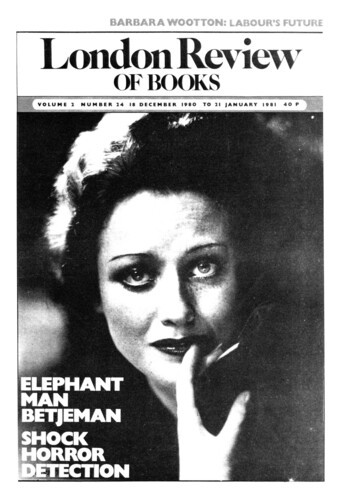Englishing Ourselves
F.W.J. Hemmings, 18 December 1980
Henri Beyle was born in what could reasonably count as Year I of the modern era, since it was then, in 1783, that the independence of the United States was formally recognised by the European powers. Stendhal made his appearance 34 years later, when a travel guide to Italy was published in Paris as the work of ‘M. de Stendhal, officier de cavalerie’. Had that pseudonymous cavalry officer, Beyle in real life, perished in the retreat from Moscow, as statistically he should have done – the chances of getting back safely were little more than one in six – no one would be thinking today of writing his biography: in 1812, Beyle was Beyle, a nonentity. Without Le Rouge et le Noir and La Chartreuse de Parme there would be no curiosity about the cavalry officer’s earlier life. Without them, it is all too likely that no one would have thought of exhuming and publishing the other works left in manuscript at Beyle’s death, in particular that fascinating analysis of an unhappy childhood, the Vie de Henry Brulard, quarried by every author of a ‘life of Stendhal’ as he drafts his opening chapters.

